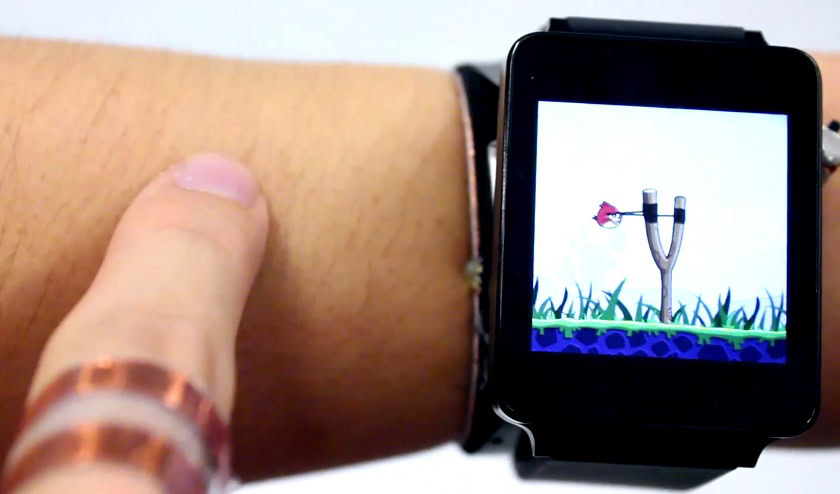Affiliate links on Android Authority may earn us a commission. Learn more.
Skintrack turns your arm into an extended smartwatch touchscreen
Published onMay 6, 2016

If you’re fed up of trying to navigate tiny smartwatch touch screens then you’ll definitely want to check out this impressive technology from a research team at Carnegie Mellon University. Known as Skintrack, the technology turns your skin and arm into a touch interface for your smartwatch, freeing up the little display to show more useful information.
Skintrack works by adding a couple of small bits of extra hardware to the setup. A sensing band is attached to the watch, while the user wears a ring on the finger they use for navigation. When the ring comes into contact with the skin, high-frequency electrical signals spread out across the skin, which eventually reach four electrodes in the sensing band on the watch. Don’t worry, the lab says that it’s quite safe. The distance between the finger and band can then be used to map out a 2D location of your pointer digit.
With the data, the system is able to track a finger over time, allowing for the registration of swipes in any direction, as well as tapping on a specific spot. With continuous tracking, the system can even be used to draw a picture. The prototype hardware shown off by the Future Interfaces Group can replicate the typical swipe up and down navigation gestures, and swiping left or right to enter and exit an app.
The team’s technology goes above any beyond your basic smartwatch navigation gestures though, it can be used to turn your arm into an extended UI with some intriguing new features too. App shotcuts can be created at any place on your arm by dragging an app from the watch onto your arm. Hotkey commands can also be implemented, so you can draw an N on your hand to open up news, or an S to silence an incoming phone call.
The hardware isn’t perfect yet though. Signal quality can vary based on factors such as sweat and skin hydration, so the commands don’t always work as they should quite consistently enough yet. Keeping the ring powered is also proving tricky, as I can’t imagine that there’s much room for a battery in there.
The group doesn’t have any plans to begin selling the technology just yet, but it’s a mighty exciting development for future wearable products. What do you think?